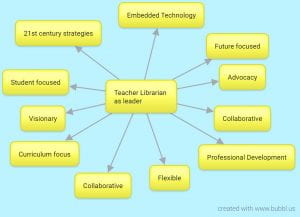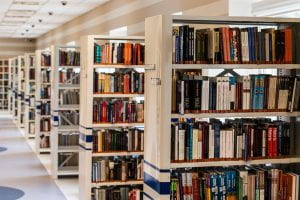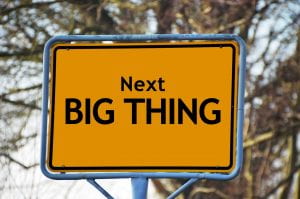Part C: Reflective Blog Post
The changing role of the teacher librarian (TL) in new pedagogies and technology usage requires schools to focus on the importance of information literacy (Herring, 2007. p.32). Students become independent and self-directed in their learning and can apply their IL skills in a broad context (ACARA, 2019). The GID model meets the outcomes for these ideas.
My knowledge of Information Literacy (IL) models and the TL’s role is more refined since beginning ETL401. Farrell, & Badke (2015) explains that students educated using IL models uniquely become involved in a community of practice. Here is the big shift that moves the role of the TL to the next level and towards the future. The social, cultural, political as well as increasing access to information are all contributors to the notion of a World Wide 21st century learning approach, rather than a skills-based approach. (Kutner, L., & Armstrong, A. 2012).
Twenty first Century learners is a buzz word in recent times. My understanding of this concept is deeper and my urgency in upgrading my approach is enthused. Guided Inquiry is at the heart of preparing our students for a different future of work and leisure. In my blog post on 21st April, I express the need for an IL model at the primary school where I am the TL. Many of our students are high achievers and have an independent and motivated work ethic which I believe would facilitate an easier transition to a GI approach. My observations of student research strategies currently are that students tend to Google search and display limited abilities to evaluate sites and information sources. A GI approach to IL has the added benefit of embedding authentic search strategies and skills. GI takes students one step further to analysis and understanding.
Emotional wellbeing is considered a relevant and expected aspect of GI. “Once students have taken time to reflect on all that they have, they begin to see.” (Kulthau, Maniotes, Caspari.2012.p.127). Reflection and emotional investment in the process encourages students to think deeply about an idea. Templeton (2019) in her blog post, (Guided Inquiry Design-An Analysis) says the learning is more fluid and allows for more student abilities and styles. Students can intrinsically engage using the 3rd space to connect to the content. As the TL in a primary school, it makes sense for a consistent approach. The GID model follows the steps a researcher moves through to achieve results (FitzGerald.2015). Repetition of this process and a thorough understanding of the steps ensures students and teachers internalise and improve with practice as they progress.
Educators must provide evidence of results of teaching programs and the GI framework allows TL to provide such evidence. Collaborative tools such as wikis, reflection charts, peer analysis and surveys are some of the methods to critically analyse the worth of TL in schools. (O’Connell.2012.p.9). TL not only support classroom teachers, they enhance curriculum, programs and learning for others. They are in a unique position to know the nature of learning and collaboration in a school. Five terms as the TL has given me a chance to step back and view the pedagogy of our school, but also to step forward to see the small complexities within year groups and classes. Perhaps it’s this ‘fly on the wall’ view as TL which allows me to understand these complexities and improve teachers and students’ practice and understanding of information literacy.
In my first year as TL I was not an information specialist, merely a classroom teacher who took on the role with interest. I am not an information specialist yet, however ETL401 has opened my eyes to the unique place a TL holds. I am also yet to embark on experiencing a whole unit of GI. In practice perhaps the GID model may be too complex for a K-6 setting. Teachers may feel overwhelmed by the many steps in the process and the time devoted to evaluation and collaboration. An alternative model could suit our school better. Popplewell (2019) in the discussion forum 5.3a, suggests the TL needs to help staff to consider the needs of the school community in choosing an IL model. My opportunity lies in guiding the school community to an inquiry model and helping to manage its implementation. Consistency in approach after an experimental phase and solid support for the TL by the Principal will move towards future learning.
There’s no going back now.
References:
Farrell, R., & Badke, W. (2015). Situating information literacy in the disciplines. Reference Services Review, 43(2), 319- 340. doi:http://dx.doi.org.ezproxy.csu.edu.au/10.1108/RSR-11-2014-0052
FitzGerald, L. (2015) Guided Inquiry in practice, Scan, 34(4) 16-17
Herring, J. (2007). Teacher librarians and the school library. In S. Ferguson (Ed.) Libraries in the twenty-first century : charting new directions in information (pp. 27-42). Wagga Wagga , NSW : Centre for Information Studies, Charles Sturt University. Retrieved from https://www-sciencedirect- com.ezproxy.csu.edu.au/science/article/pii/B9781876938437500028
Kutner, L., & Armstrong, A. (2012). Rethinking Information Literacy In A Globalized World. Communications in Information Literacy, 6(1), 24-33. doi:http://dx.doi.org.ezproxy.csu.edu.au/10.15760/comminfolit.2012.6.1.11
Nicklin,D.(2019) 5.3b Guided Inquiry.[Blog Post]. Retrieved from:
https://thinkspace.csu.edu.au/debnicklin/2019/04/21/5-4-a-information-literacy-fitzgerald-l-garrison-k-2017-it-trains-your-brain-student- reflections-on-using-the-guided-inquiry-design-process-synergy-152-how-might-the/
O’Connell, J. (2012). So you think they can learn? Scan, 31, May, 5-11. Retrieved from CSU Course Notes: https://heyjude.files.wordpress.com/2006/06/joc_scan_may-2012.pdf
Popplewell,R.(2019,May,14).5.3a Information Literacy Model.[Discussion Forum]. Retrieved from: https://interact2.csu.edu.au/webapps/discussionboard/do/message?course_id=_42380_1&nav=discussion_board_entr y&requestType=unread_user_forum&conf_id=_78883_1&action=collect_forward&origRequestId=79534376_15580 09194389&forum_id=_147406_1&status=unread&
Templeton,T.(2019,April,30). Guided Inquiry Design-an Analysis [Blog Post].
Retrieved from: https://thinkspace.csu.edu.au/trish/






